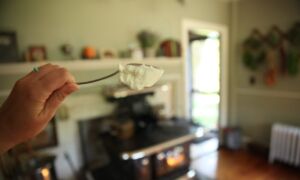In May of 2016, I met the other future love of my life next to my husband and I didn’t even know it. We were doing the first showing of our house and made our way into the garage. The garage was tidy and neat, and then there under the stairs under boxes of junk I saw her…
Underneath the boxes was a rusty, dusty stove that clearly hadn’t been used in quite some time. I knew nothing about stoves, was it busted beyond repair on the inside? Was it worthless? I had no clue. But I turned my head to our real estate agent (aka cousin) Crystal and said “this stays with the house no matter what”. Clearly I had already made up my mind we were going to buy the house. I had no idea the deep love affair that would come about.
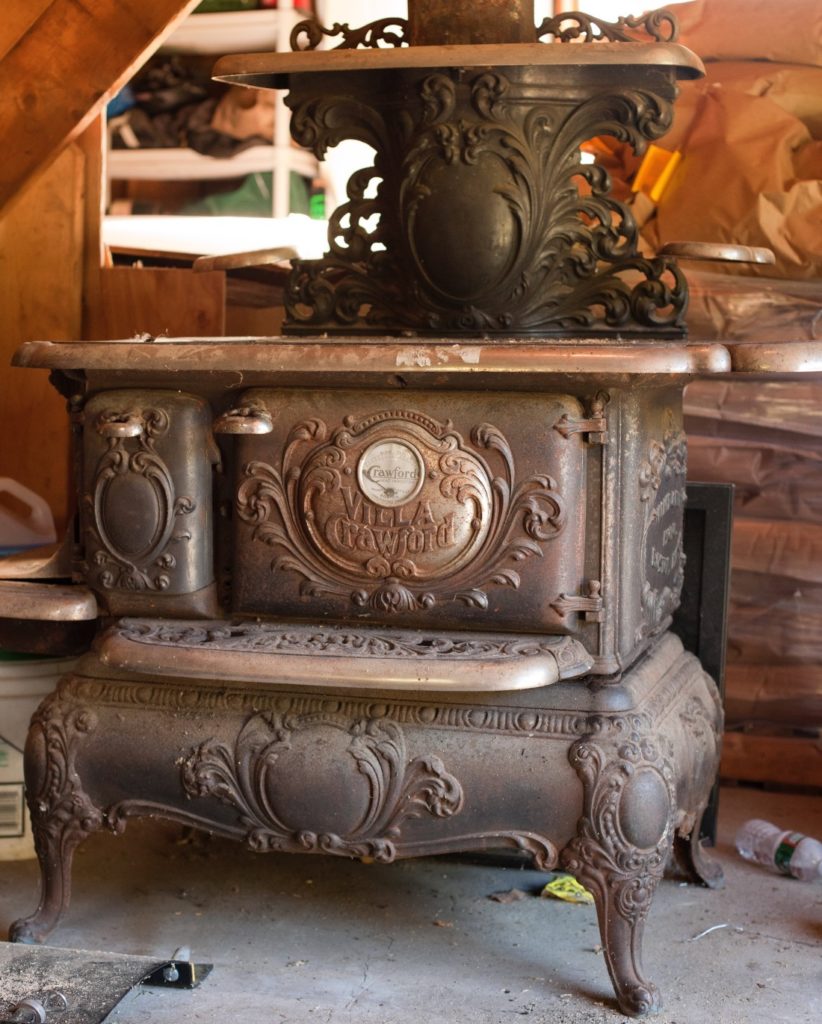
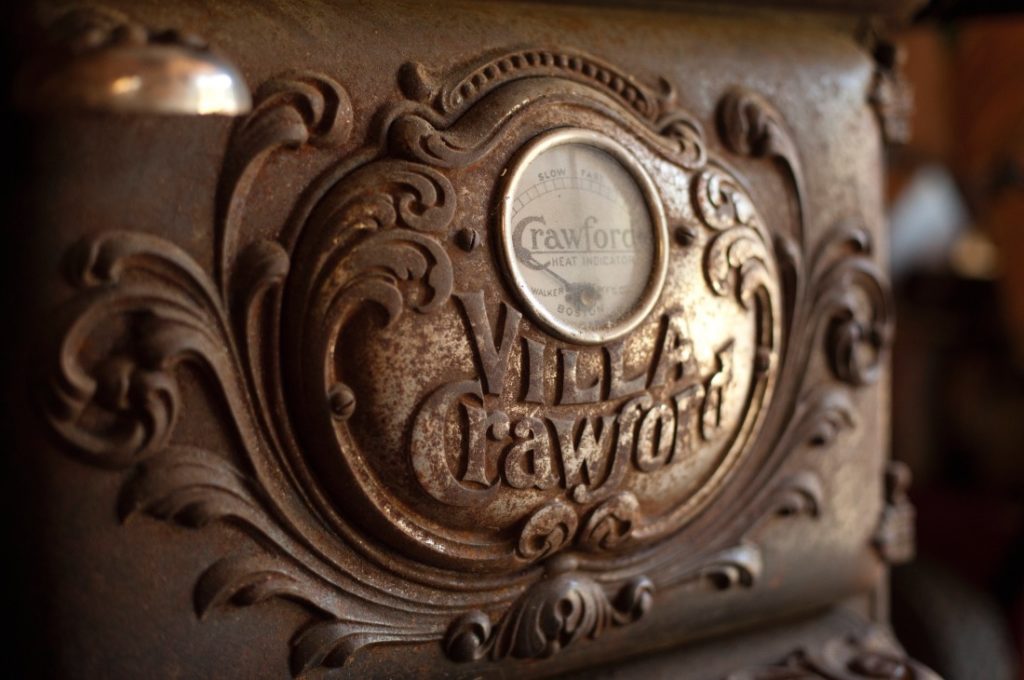
Well, we bought the place, and some time passed. If you follow me on Instagram you know that our place and property has been quite the project and kept our hands full. Money to restore a stove wasn’t exactly top priority, so she continued to sit in the garage. Unused and covered in boxes. I would go out occasionally, check in on her, give her a good look over, and whisper sweet nothings into her rusty nickel warming shelves. Her time would come soon enough, but we weren’t quite ready for her.
After several months I started to get curious. I had no idea what I had in the garage, if it could even be restored, and if it could, how much money it would cost. After some quick googling, I found a local stove guy that specialized in antique stove restorations. Seemed like the man to call. So, I did and what proceeded felt like an episode of antique roadshow.
“You have a WHAT? Does the number on the back left say 8-20? And it has all of the nickel warming shelves, the side shelf, AND the queens shelf?” David (who would soon become “my stove guy”) was in shock. He couldn’t believe that not only was I in possession of a Villa Crawford, but that it was complete with all of its shelves, burners, and without any major visual defects or damages. In his over forty years of business, he has seen three…THREE! He demanded I send him some pictures to confirm, and I did. Turns out that I had a true rare gem on my hands. I was that person that showed up for an appraisal with some crummy old vase expecting $20, was worth $20,000, and had “no idea what I had”. Turns out I was sitting on a gold mine. Okay, maybe not that extreme, but still it felt very Antique Roadshow-esque.
I made it my mission to give this stove a complete restoration, and look like the day she left the foundry. So I saved, and I saved, and saved. I saved for two years. Then, our existing subpar kitchen woodstove developed a major structural and safety malfunction in the late spring of 2018. Not worth repairing, we were in need of another woodstove. It was time for Lady Crawford to shine again.
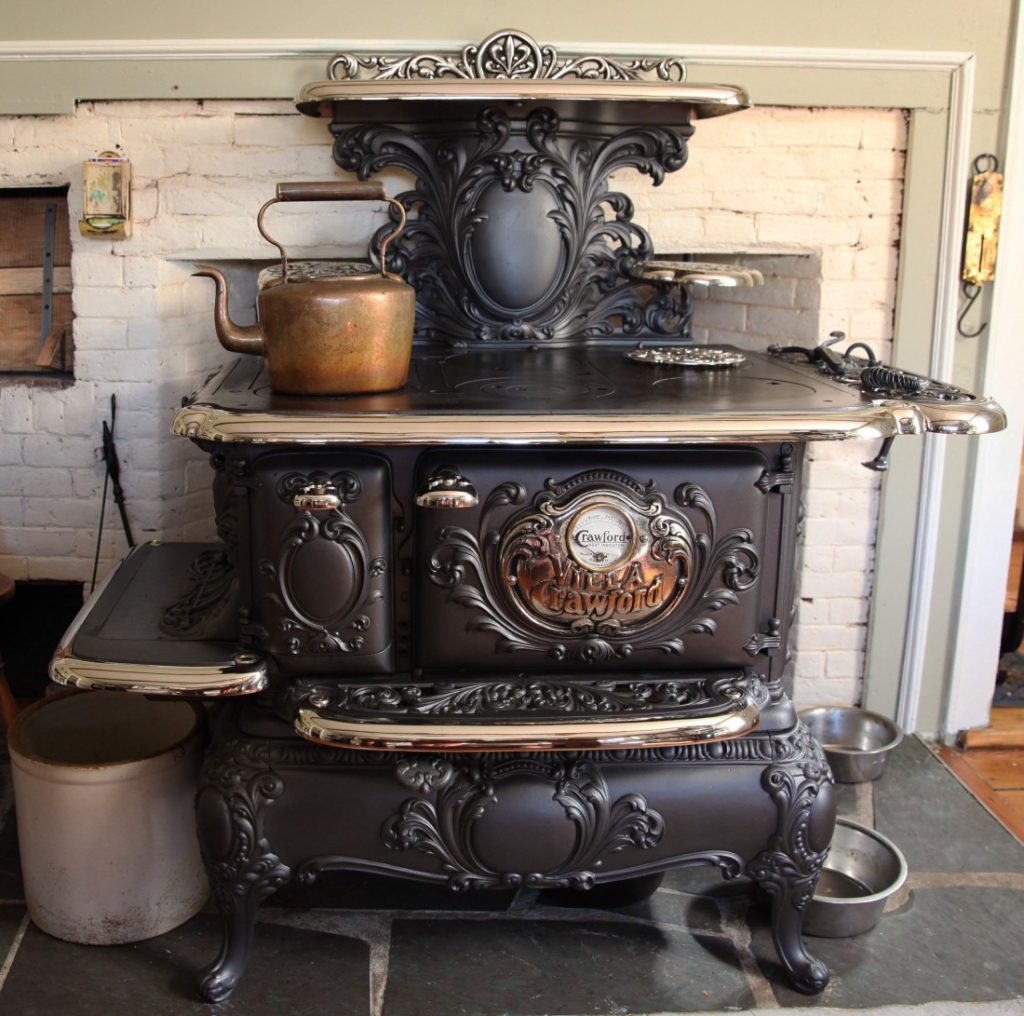
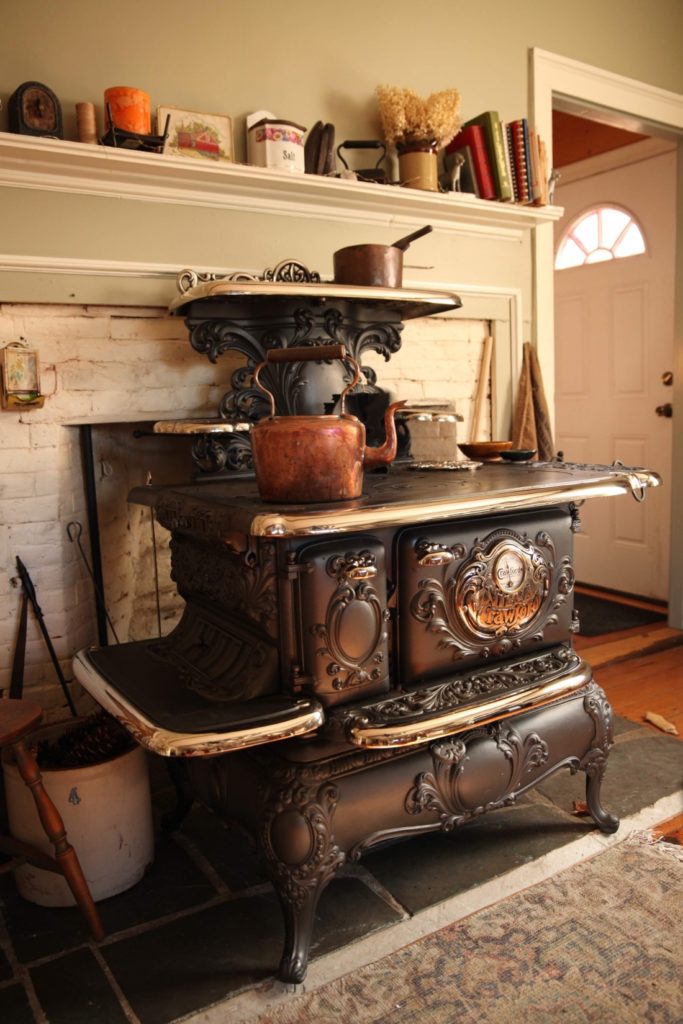
This stove underwent a complete restoration, down to the nuts and bolts. It’s more solid than the day it left the Crawford Foundry in Watertown, Mass in 1898. It was sandblasted to remove all rust and residual paint and debris before being repainted in a period correct finish. The nickel was re-plated. Any cracks or breaks within the stove itself were reinforced and welded. The firebox intended for coal, was converted to wood with an extender added to accommodate longer logs before being reinforced with fire cement. Each burner that was “worn out” had a metal bar added to allow the handle something to grab onto to lift them. There is not a corner of this stove that wasn’t inspected, reinforced, and refinished.
A Brief Little History
So you’re probably thinking what makes this stove so special? Aside from the sheer beauty of it, it is pretty incredible. Prior to 1900 these stoves were functional works of art. Intricate scrollwork and filigree, with raised emblems, and totally nickeled out. The amount of detail in this stove is unbelievable. From 1900 on, the stoves went more steamlined as this was the “modern” direction people were going. Filigree and raised scrollwork gave way to flat surfaces, and they became pretty plain. Nice functional stoves, but you certainly don’t look at them and go “wow”. This was what was appealing at the time.
Now, here we are over a hundred years later and these pre-1900 stoves are highly coveted for their level of detail and “fanciness”. But, the timestamp isn’t the only thing that makes this stove so special. It is COMPLETE with no missing major components. Typically, these things got moved around over the past hundred years with the addition of modern gas/electric stoves into peoples kitchens. These wood burners would get moved out to a garage or barn much like where we found ours. They get neglected, bumped by a tractor, shuffled and moved around and things get lost. Most commonly the removable shelf on the right as well as the top “queens shelf” were the most common victims of this. They are removable, so they easily get bumped off and lost forever.
Not my Lady Crawford. I didn’t know it when I saw her sitting there in the garage for the first time, but with the exception of the kick plate and simmer trivet, she was complete. Aside from the fact that this is such a rare stove to begin with, David could not believe the condition that it was in. Thankfully being an antique stove restorer, he has quite the cache of random original parts and during the restoration replaced the kickplate and simmer trivet. Both original Crawford items.
Another incredible thing about the stove? The heat indicator is not only clean and clear like the day it was made, but it works. Due to being exposed to the elements and severe fluctuations in temperature, the glass on these is commonly cloudy and hazy, full of condensation. And even more commonly, they just plain don’t work. Despite the stove being kept in a garage for who knows how many years, it is perfectly functional and clear.
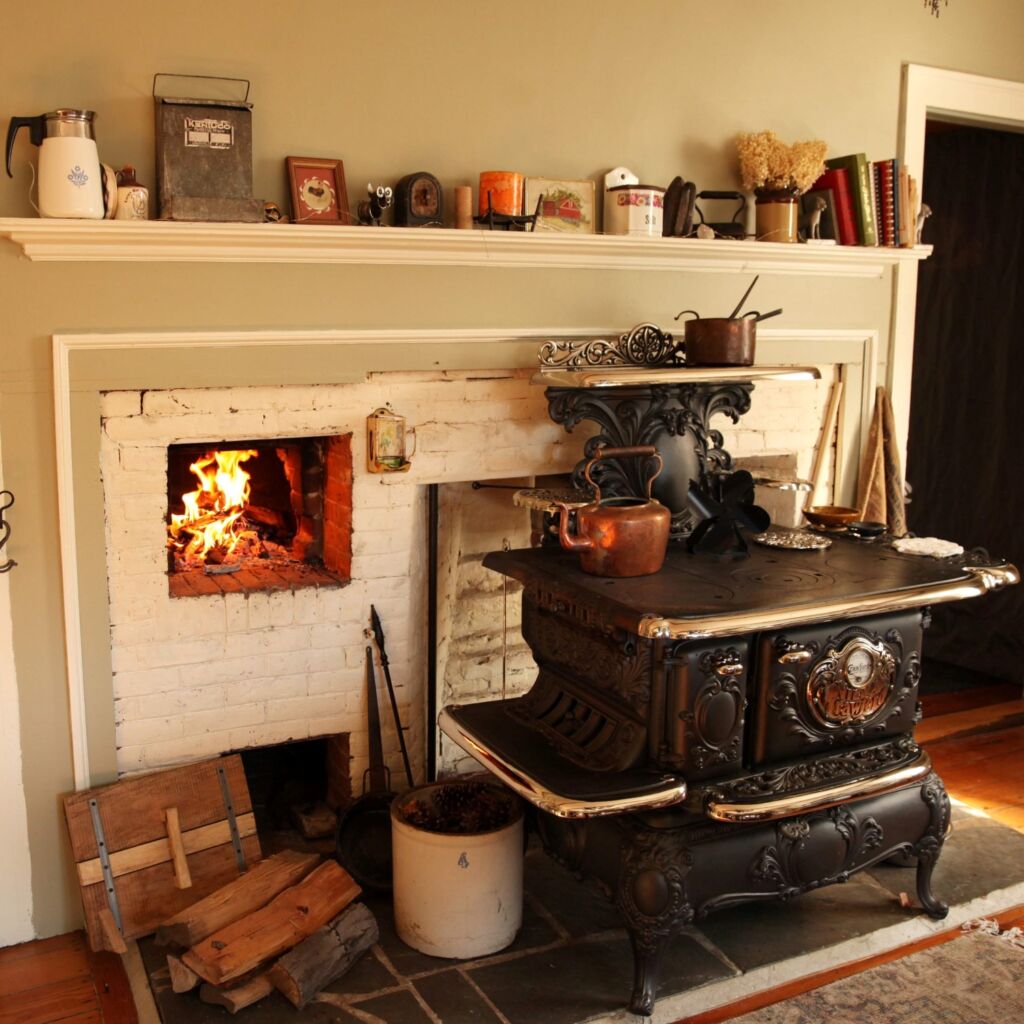
A Modern Twist
You know how when you’re burning in your woodstove and you get that awesome bed of glowing red hot coals and you think “man that would be awesome to grill over?”. Well, with one little modern twist you can!
David has a cast for the standard opening seen in Crawford and Glenwood Models where the two burners over the firebox lift up and out. So, what did he do? He made a grill insert that fits perfectly over the firebox. The ductile iron pan is slightly pitched down to allow the juices to collect in the reservoir on the left side with a pour off spout. Once you get a good bed of coals, you open the drafts (this will suck any smoke down, out, and up your chimney) throw this baby on and you can get your grill on in the middle of winter. Wood fire grilled chicken breasts in January by the comfort of my warm stove? Yes please!
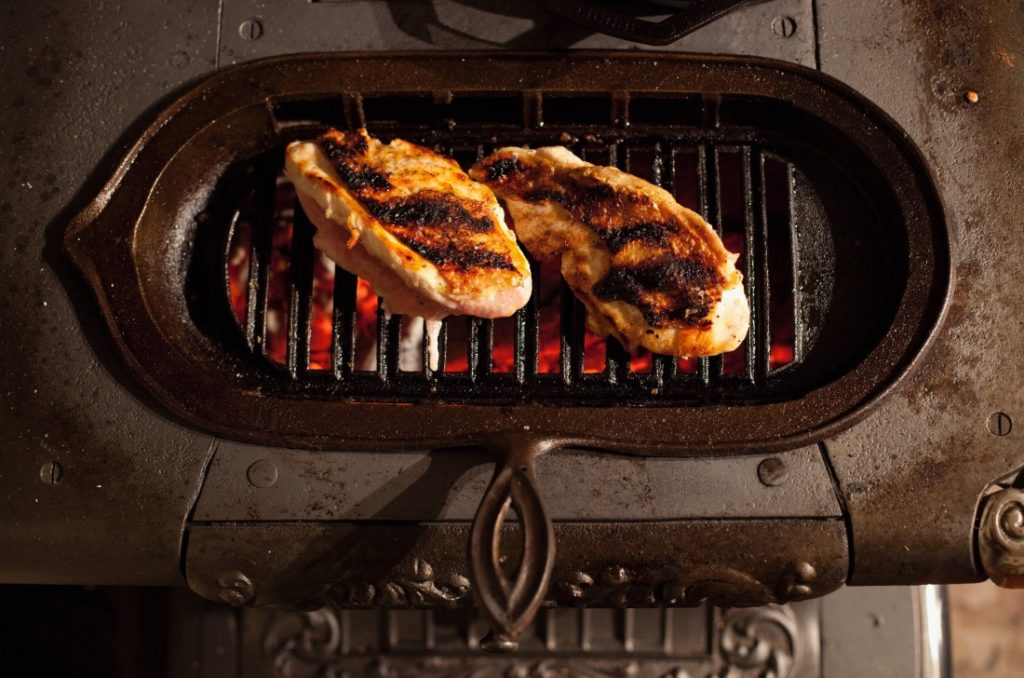
Another incredible invention that didn’t come about until several decades after this stove was made, was the multi burner lifter. Wood is loaded into the firebox from the top, and there are two burners and one middle plate to remove in order to load. When this stove was built in 1898, the only way to load was to individually lift each burner and the center plate out with the single lifter, load, and then put each one back. So, we are talking six lifts per load. Tedious much? Post 1900, and don’t quote me on this but I wanna say it was around the 40’s, a new lifter was invented that allowed you to lift all three at once. You have a good enough grip to be able to hold it as you load your wood and then place it back. Amazing how such a simple design can make such a difference in the practicality and use.
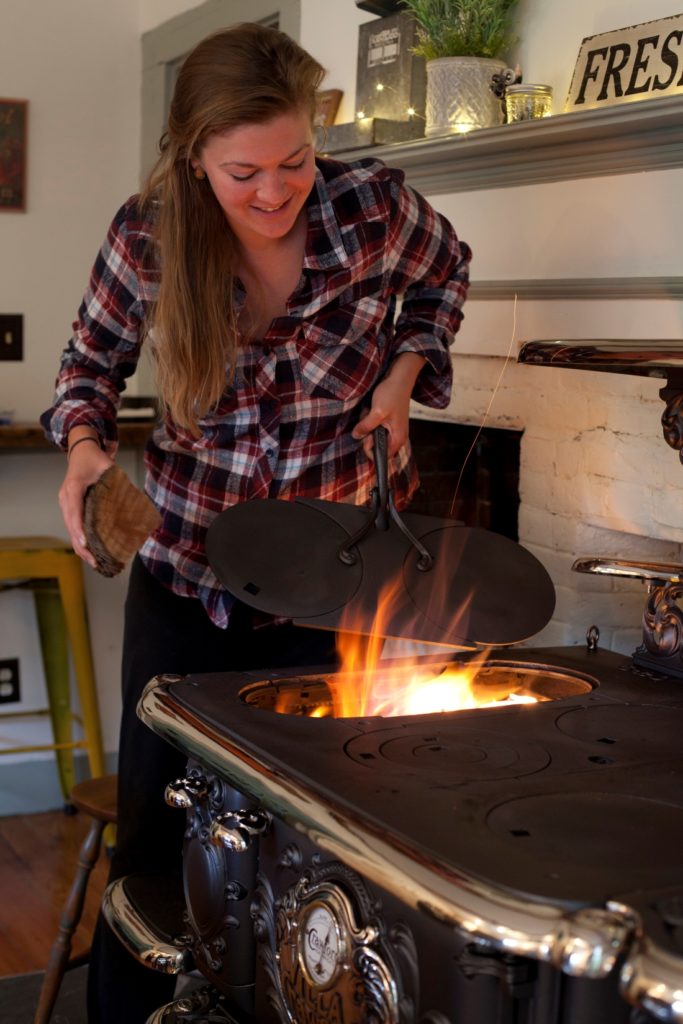
My love for this stove knows no bounds, and I am just as amazed by it two years later as I was the day it came back from the restoration. I told my husband that my final wish is to be cremated in it 😀
The number one question I get asked is it’s it horribly inefficient? People equate old to inefficient or subpar. I will fight anyone on this topic – modern stoves have nothing on this girl. This is coming from the person who ripped out two Woodstove Soapstone stoves to put in hundred year old Crawfords. They just cannot compare in craftsmanship and design. Its design turns it into one big cast iron radiator that allows it to pump out the heat as well as the food all winter long. The best seat in the house is right next to the stove, and is usually where you can find me with knitting needles in hand.
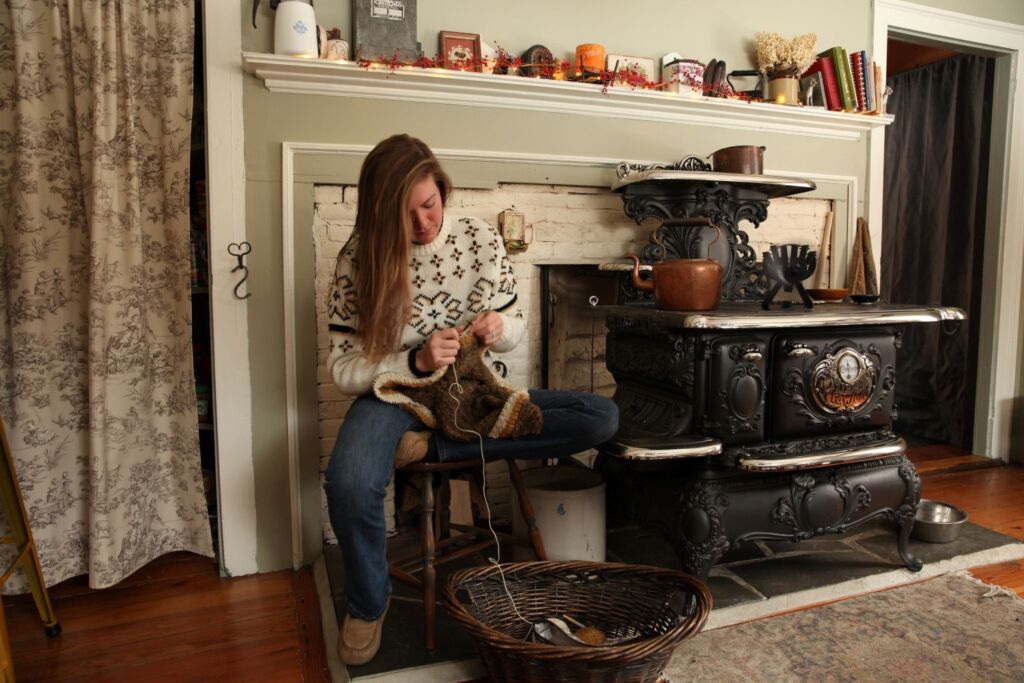
If you’re interested in a video walk through and the ins and outs of how the stove works, what does what, etc, I highly suggest you check out my IGTV video walkthrough below, and all things #villacrawfordstove on Instagram.


